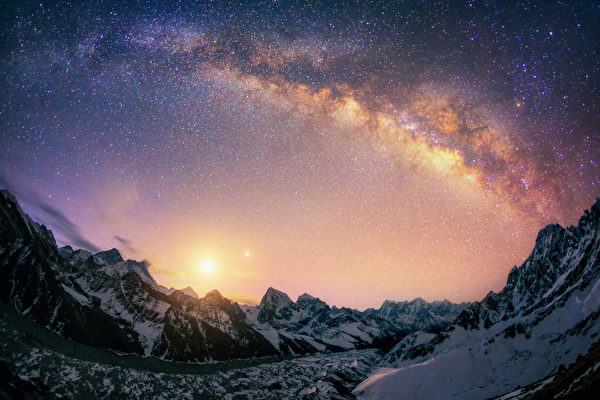In the night sky of June, the annual most spectacular astronomical feast is about to unfold. From the magnificent appearance of the galactic core to the gentle entrance of the low-altitude full moon known as the “Strawberry Moon”, along with rare encounters of Mars, Mercury, and several dazzling stars, as well as meteor showers, new moons, and the summer solstice – this month can be considered a golden month for stargazing.
Whether you are a seasoned astronomy enthusiast or a photography novice looking up at the sky for the first time, the night sky this month is worth stopping and gazing at. This article selects 6 astronomical wonders and provides the clearest observation times and practical shooting guides.
According to the United States National Aeronautics and Space Administration (NASA), June is the best time of the year to view the center of the Milky Way galaxy. The reason is that at this time, the Earth’s night sky is aligned with the center of the galaxy, and the dry stable atmosphere is conducive to observation.
When observing, it is recommended to choose a location away from light pollution, face south, and you can see the silvery starry river with the naked eye; for more spectacular effects, long-exposure photography can be paired with the observation.
On June 7th, the Arietids meteor shower will peak, although it is difficult to observe during the day, occasional meteors may be visible at night.
When observing, the use of radar equipment can “listen” to the radio echoes produced by meteor impacts in the upper atmosphere, a method recommended by many experts.
From the evening of June 10th to the early morning of the 11th is the peak period of the “Strawberry Moon”. This name originates from the traditional berry-picking season of Native American tribes. The moon rises slowly from the horizon in a golden-orange hue, with a warm and striking color that is particularly eye-catching.
Key observation point: The full moon time is at 3:43 am Eastern Time on June 11th, but the best viewing period is from the evening of the 10th to the next morning.
Of particular note, this Strawberry Moon will appear in the direction of Scorpius, visually close to the brightest red star in that constellation – Antares, creating a warm and poetic astronomical scene when both are reflected in the night sky.
From June 6th to 9th, Mercury and Jupiter can be seen in conjunction in the late evening, with the closest alignment on June 8th, suitable for dual-tube observation.
On June 16th to 17th, Mars will enter Leo, and will be less than 1 degree apart from its brightest star – Regulus, presenting a beautiful “double star alignment” spectacle.
It is recommended to use a dual-lens telescope for observation and also attempt to shoot the planets and stars in a co-located frame.
In late June, the moon will stage a “celestial rendezvous” with several bright stars and planets for several days:
– June 22nd morning: The moon will be close to Venus, appearing in the southeastern low sky;
– June 23rd morning: The moon approaches the Pleiades star cluster, where the silver-white star cluster and moonlight complement each other, providing a great opportunity for shooting long-exposure starry skies;
– June 26th evening: The moon aligns with Mercury on the western horizon, requiring a broad field of view for observation;
– June 29th late night to 30th early morning: The moon will occult Mars (moon occults Mars), but will only be visible in some parts of South America (such as Peru, Ecuador). In other areas, the moon and Mars can be observed in close proximity with the naked eye.
This period is an excellent window in June to observe the interaction between planets and the moon, suitable for observation and photography with telescopes or telephoto lenses.
June 25th is the new moon, with no moonlight interference throughout the night, making it the golden opportunity to observe deep sky objects such as galaxies, star clusters, and nebulae.
It is recommended to choose locations away from light pollution, and pair observations with long-exposure photography or telescopes.
June 21st is the summer solstice, the longest day of daylight in the northern hemisphere throughout the year, with the night starting later. However, even after dusk until late night, phenomena such as Mars approaching Regulus and other planets can still be observed, making it suitable for scheduling nighttime observation activities.

